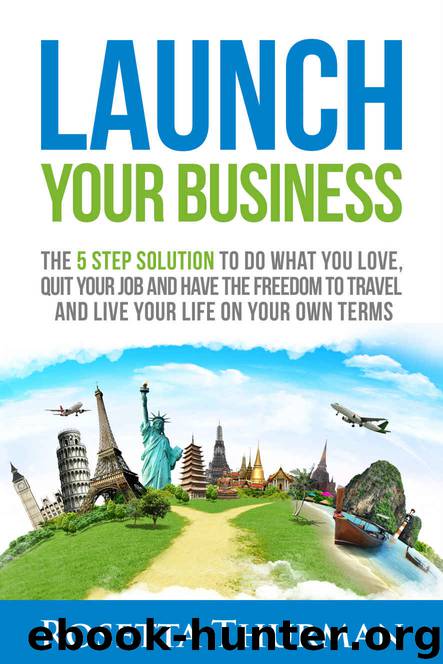Launch Your Business: The 5 Step Solution to Do What You Love, Quit Your Job and Have the Freedom to Travel and Live Life on Your Own Terms by Rosetta Thurman

Author:Rosetta Thurman [Thurman, Rosetta]
Language: eng
Format: epub
Publisher: Lifestyle Entrepreneurs Press
Published: 2015-04-25T21:00:00+00:00
How to Set Prices
The goal in pricing is to implement value-based pricing. We’ve covered some guidelines already, but it’s also important to set your pricing according to value. Prices should not be based solely on your time invested. Even when you charge by the hour, you’re not just charging for your time, but the value you’re providing in that hour.
For example, if you’re a coach and you work with someone for an hour, and in that hour she has a breakthrough that changes her entire life, that is priceless. That’s a lot of value you just gave her. So pricing is not just based on your time, but on the value provided. But at the very minimum, pricing should include the cost of your time, any materials, overhead, and travel. It’s crucial that you include all of the costs that go into your product or service.
We covered how you can earn higher fees by offering packages and bundles of services. This also applies if you’re selling physical products. You can offer a bundle of products at a small discount, or bulk pricing on orders of 50 books or more, for example. Bundling can bring more sales for you and more value for your client.
When you’re talking about your pricing, use words like “investment” instead of “cost” or “fee.” Thinking of something as a “cost” or “fee” because makes the price sound high, when it’s actually an investment. For example, when people buy coaching from me, it’s an investment in themselves and the goals they want to achieve. When you’re talking to a company or organization about hiring you as a teacher or consultant, it’s an investment in their staff and company knowledge base. It’s an investment in the long-term growth and health of their organization. It’s not a cost or a fee.
Some people may want to hire you or buy your product or service, but they don’t have sufficient money at that moment. There are options to ensure that you still make the sale: You can offer discounts to get the sale now instead of later; you can offer your clients and customers payment plans; and you can give potential customers a way to pay in installments.
You can also offer what I call “fast action savings” or “quick decision savings.” Give potential clients an incentive to decide right now. For example, when I talk to a client on the phone and she wants to do coaching but doesn’t have all the money on hand, I say, “Well, if you decide to hire me within 48 hours, I’ll give you a discount of a couple hundred dollars.” People usually agree to proceed, and somehow they end up finding the money.
People want to get the best price possible. If my offering a discount is going to help them decide to go after their goal with my help, then it’s worth it for both of us.
Other types of discounts can also boost your sales. Offering early bird discounts, especially when it comes to events, pushes people to make a decision.
Download
This site does not store any files on its server. We only index and link to content provided by other sites. Please contact the content providers to delete copyright contents if any and email us, we'll remove relevant links or contents immediately.
Nice Girls Don't Get the Corner Office by Lois P. Frankel(2979)
Brotopia by Emily Chang(2962)
Lean In by Sheryl Sandberg(1456)
Resilience by Lisa Lisson(1378)
Lean In: Women, Work, and the Will to Lead by Sheryl Sandberg(1357)
Invested by Danielle Town(1338)
In the Darkroom by Susan Faludi(1317)
I Shouldn't Be Telling You This: Success Secrets Every Gutsy Girl Should Know by Kate White(1261)
The Sense of an Ending by Julian Barnes(1207)
Women Who Work by Ivanka Trump(1203)
Brave, Not Perfect by Reshma Saujani(1187)
Boss Bitch by Nicole Lapin(1168)
Sun Tzu's Art of War for Women by Catherine Huang(1166)
Girl, Stop Apologizing: A Shame-Free Plan for Embracing and Achieving Your Goals by Rachel Hollis(1165)
Unlocking Your Authentic Self: Overcoming Impostor Syndrome, Enhancing Self-confidence, and Banishing Self-doubt by Jennifer Hunt(1158)
Girl Decoded by Rana el Kaliouby & Carol Colman(1112)
Woman to Woman by Kim Chamberlain(1081)
Fifty Million Rising by Saadia Zahidi(1080)
Estate Sales Made Easy by Victoria Gray(1072)
